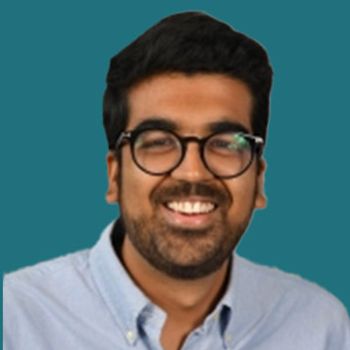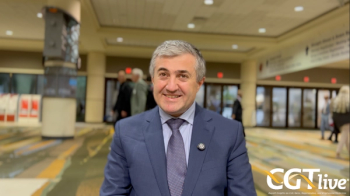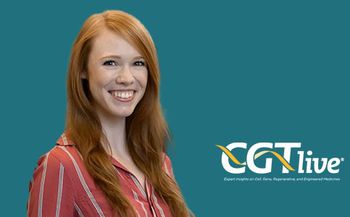
Sickle Cell Disease Gene Therapy Exa-Cel's Ability to Prevent VOCs
Haydar Frangoul, MD, the medical director of pediatric hematology/oncology at Sarah Cannon Research Institute and Pediatric Transplant and Cellular Therapy Program at TriStar Centennial, discussed the latest data update from the CLIMB SCD-121 trial evaluating exa-cel.
At at the
Frangoul went over the key points from the new data, which included over 90% of participants remaining vasoocculsive event (VOC)-free and an over 90% hospitalization-prevention rate. He also discussed the broader impact of exa-cel as the first CRISPR-based therapy and future plans for further research.
HCPLive: Can you discuss the CLIMB SCD-121 study and the latest follow-up findings?
Haydar Frangoul, MD: As you know, SCD is a terrible disease. It's very debilitating. It causes a lot of morbidity and actually shortens the lifespan. Despite everything we do, the lifespan of individuals with SCD is still in the mid to late 40s, which is much lower than what you expect in the general population. So we need therapies, and the only cure currently available is allogeneic transplant from a sibling, which only is available to around 18% or 20% of people with SCD. So I think we really badly need gene therapy to help us bridge that 80% gap in individuals who need these therapies, but don't have a matched sibling. I think that's where gene therapy is really opening the field and opening the options for patients to potentially get a functional cure from SCD using these therapies.
We started the journey with exa-cel around 6 years ago. Now I cannot believe it has been so long. Our first patient we treated is now a little bit over 5 years out, which is an amazing accomplishment. Thinking about it, with the first patient that I treated, when I walked into her room, she was the first patient ever to get this therapy. She's very well known. She basically was referred to us for an allogeneic transplant. When she came in, she was scared of the graft versus host disease, because she did not have a full match, she had a half match. So then we told her, "you will be the first person to receive this therapy. You will be the first person to receive a gene edited product in humans." And she signed up, and as you know, it was very effective in her and subsequently, we have shown data in this meeting that with prolonged follow-up, more than 90% of the patients were able to remain vaso-occlusive crisis-free long-term, and we are preventing more than 90% of the hospitalizations—90% of the patients did not require any hospital admissions. What we have shown also is that the patients are able to maintain a fetal hemoglobin of over 40% that is sustained over years, including up to 5 years, which is our longest follow up.
How do these data add to the literature on validating CRISPR/Cas9 gene editing?
I think CRISPR/Cas9 was discovered literally around 12 or 13 years ago, correct? And we put it into patients around 5 or 6 years after it was discovered, and it has really changed the field of medicine. When we started this process, we were the first people to do it. But now, when you walk into ASH today, there are multiple sessions, even in chimeric antigen receptor T-cell (CAR-T) therapy, in SCD, in immune deficiency; people are thinking about using CRISPR to gene edit the cells. It used to be thought of as science fiction that you are able to take a cell and manipulate the DNA, cut it or edit it, and now it is reality. It's happening in patients and it's actually helping patients quite a bit. I'm very optimistic that the field of gene editing will continue to grow and evolve. I keep telling people that our therapy was CRISPR gene editing 1.0 and I'm pretty sure as the field evolves, we are going to potentially use safer conditioning regimens for patients that does not cause hair loss and infertility. But we had to start somewhere… and I think that's why it's so groundbreaking, is what we did is we established the bar, and now it can only get better from here.
Every ASH meeting—you know, it's like the first CAR-T therapy when it was first discovered. It was one product, one indication, and now it's multiple things that can be done. I think our work—and I think that's why exa-cel is so important—our work is the first step, but it's actually an important step because it showed that gene editing can be safely and effectively done in human cells.
What are the next steps with exa-cel research?
We want to watch the long-term data. Franco Locatelli presented today some of the long-term data on transfusion-dependent β-thalassemia. We are presenting the SCD data as a poster session in the afternoon. The big question yet to be answered is, "yes, we are preventing vasoocculsive crises, but how is that going to impact the end organ damage that we know SCD patients will develop years and years and years down the road?" So I am very excited to see where the field goes. The other big thing is, there are ongoing trials in young children between the ages of 5 and 12, and as you know, if you treat the disease early before the end organ damage, potentially you can prevent some of those horrible things that can happen. Several of my patients that I treated on the trial already had avascular necrosis, which is a damage to the joint. I'm hoping that we are able to treat patients earlier, so we can prevent them from having these irreversible complications related to SCD.
This transcript has been edited for clarity.
REFERENCE
Frangoul H, Locatelli F, Sharma A, et al. Durable Clinical Benefits with Exagamglogene Autotemcel for Severe Sickle Cell Disease. Presented at: Presented at: ASH Annual meeting; December 7-10; San Diego, California. Abstract 4954.
Newsletter
Stay at the forefront of cutting-edge science with CGT—your direct line to expert insights, breakthrough data, and real-time coverage of the latest advancements in cell and gene therapy.

















































